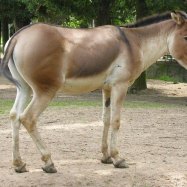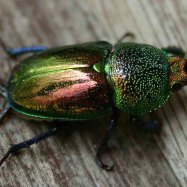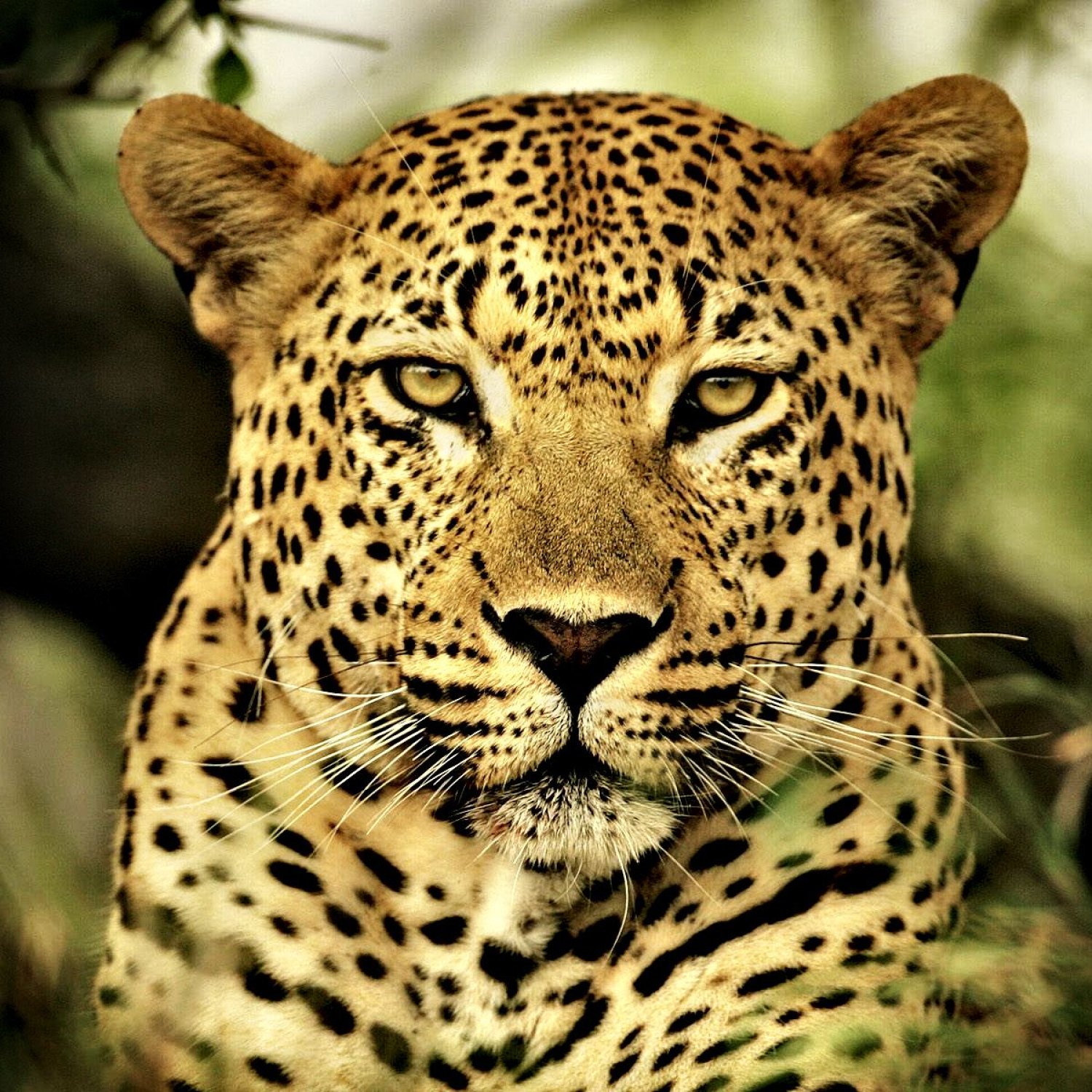
Leopard
4 to 6.25 feet (1.2 to 1.9 meters)
Did you know that leopards are one of the most adaptable and widespread animals in the world? Found in Africa and Asia, these sleek and muscular creatures can grow up to 6.25 feet long. With its beautiful spotted coat, it's no wonder why they are a beloved member of the Felidae family. Keep an eye out for this majestic feline next time you're on a safari adventure!
Animal Details Summary:
Common Name: Leopard
Kingdom: Animalia
Habitat: Various habitats including forests, grasslands, and mountains
The Majestic Leopard: The Golden Predator of Africa and Asia
In the vast and diverse animal kingdom, few creatures can rival the beauty and power of the leopard. With its striking golden fur and sleek muscular body, the leopard is a true marvel of nature. Its presence is enough to captivate anyone lucky enough to witness it in its natural habitat.Leopards, scientifically known as Panthera pardus, are majestic creatures belonging to the kingdom Animalia, the phylum Chordata, and the class Mammalia Leopard. They are classified under the order Carnivora and the family Felidae, making them close relatives of other big cats such as tigers, lions, and jaguars.
These magnificent creatures are found across various habitats in Africa and Asia, making them one of the most widespread big cats in the world. Let us take a closer look at the fascinating features and characteristics of the leopard.
Habitat and Distribution
Unlike other big cats, leopards are incredibly adaptable and can thrive in a variety of environments. From dense forests to dry savannas and even rocky mountain ranges, leopards can call almost any place home. This adaptability is one of the main reasons for their widespread distribution.They are commonly found in Africa, with the largest populations being in countries such as South Africa, Tanzania, and Botswana. They also have a significant presence in parts of Asia, including India, China, and Russia. However, due to deforestation and human encroachment on their habitats, their numbers have significantly decreased in recent years Lazarus Lizard.
Although leopards are found in various places around the world, they prefer to reside in areas with lots of trees and climbing opportunities. This preference is due to their agile and tree-climbing abilities, which they use to stalk prey and escape from predators.
Feeding Method
As a part of the Felidae family, leopards are strict carnivores, meaning their diet consists exclusively of meat. These skilled predators have a vast array of prey, including antelopes, deer, monkeys, birds, and even smaller mammals like mice and hares. Leopards are also known to hunt larger animals such as wild boars and buffalo, but these hunts are rare and require the collaboration of multiple individuals.The leopard's hunting technique is a true display of agility, stealth, and strength. They use their powerful legs to chase their prey and can reach impressive speeds of up to 36 miles per hour. Their golden fur helps them blend into their surroundings, making them almost invisible to their unsuspecting prey.
Once a leopard is within striking distance, it uses its sharp claws and teeth to take down its prey with one decisive blow. Their muscular body allows them to drag prey up into trees, where they can safely consume their meal without the fear of scavengers stealing it.
The Golden Predator
One of the most striking features of leopards is their beautiful golden fur, marked with rosette patterns. These patterns are not only aesthetically pleasing but also serve as camouflage, helping them blend into their environment and remain hidden from predators and prey alike.Interestingly, the color of a leopard's fur can vary depending on its habitat. Those living in dense forests tend to have darker fur, while those residing in lighter-colored habitats, like savannas, have lighter fur. This adaptation allows them to remain undetected by blending into their surroundings.
Another distinguishing feature of leopards is their long and powerful tail. The tail serves as a balancing tool, especially when climbing trees, and also provides stability when running or making sharp turns while chasing prey.
The Sleek and Muscular Body
Leopards have an impressive body structure that has evolved through years of natural selection. They have a sleek and muscular body, making them agile and efficient hunters. Their hind legs are longer and more powerful than their front legs, giving them the ability to jump long distances and take down prey with a single pounce.On average, leopards measure between 4 to 6.25 feet in length and can weigh anywhere between 66 to 176 pounds. These measurements may seem compact when compared to other big cats like lions and tigers, but they make up for it with their incredible strength and agility.
Their retractable claws are another essential part of their body structure, allowing them to efficiently climb trees and hunt prey. The sharp claws also serve as a means of defense against predators, making it challenging for any attacker to get close.
Conservation Status and Threats
Despite being powerful hunters and having an extensive habitat range, leopards are classified as a vulnerable species by the International Union for Conservation of Nature (IUCN). Their populations have significantly declined in recent years due to various human-related factors such as illegal poaching, habitat destruction, and human-wildlife conflict.Leopards are often hunted for their fur, which is highly coveted in the fashion industry. Their body parts are also used in traditional medicine in some parts of Asia. These illegal activities have caused a decline in their numbers, especially in areas where they are heavily hunted.
The destruction of their natural habitat is another significant threat to the survival of leopards. As human populations expand, more land is cleared for agriculture and development, leaving leopards with less space to roam and hunt. This fragmentation of their habitat also isolates populations and makes it difficult for them to find suitable mates, leading to a decline in genetic diversity.
Efforts to Protect Leopards
Thankfully, several conservation efforts are in place to protect these magnificent creatures and ensure their survival. Many organizations and NGOs are working towards creating awareness and promoting conservation of leopards and their habitats.One of the most successful initiatives is the establishment of protected areas and wildlife reserves where leopards can thrive without human interference. These protected areas not only provide a safe haven for the leopards but also help in maintaining a balance in the ecosystem.
Furthermore, the enforcement of laws and regulations to prevent illegal poaching and trade of leopard products has also played a crucial role in their protection. Governments and conservation organizations are also working towards educating locals and finding alternative ways to reduce human-wildlife conflict.
In Conclusion
The leopard is truly a magnificent creature, with its golden beauty and powerful presence. Their adaptability, hunting prowess, and agility make them one of the most remarkable predators in the animal kingdom. However, their survival is threatened by human activities, making it our responsibility to protect and conserve them.By understanding and appreciating the vital role leopards play in their habitats, we can work towards ensuring their survival for future generations to witness and admire this majestic species. Let us all join hands in protecting and preserving the beauty of the golden predator of Africa and Asia - the magnificent leopard.

Leopard
Animal Details Leopard - Scientific Name: Panthera pardus
- Category: Animals L
- Scientific Name: Panthera pardus
- Common Name: Leopard
- Kingdom: Animalia
- Phylum: Chordata
- Class: Mammalia
- Order: Carnivora
- Family: Felidae
- Habitat: Various habitats including forests, grasslands, and mountains
- Feeding Method: Carnivorous
- Geographical Distribution: Africa, Asia
- Country of Origin: Africa
- Location: Africa, Asia
- Animal Coloration: Golden yellow or light tan with rosette patterns
- Body Shape: Sleek and muscular
- Length: 4 to 6.25 feet (1.2 to 1.9 meters)
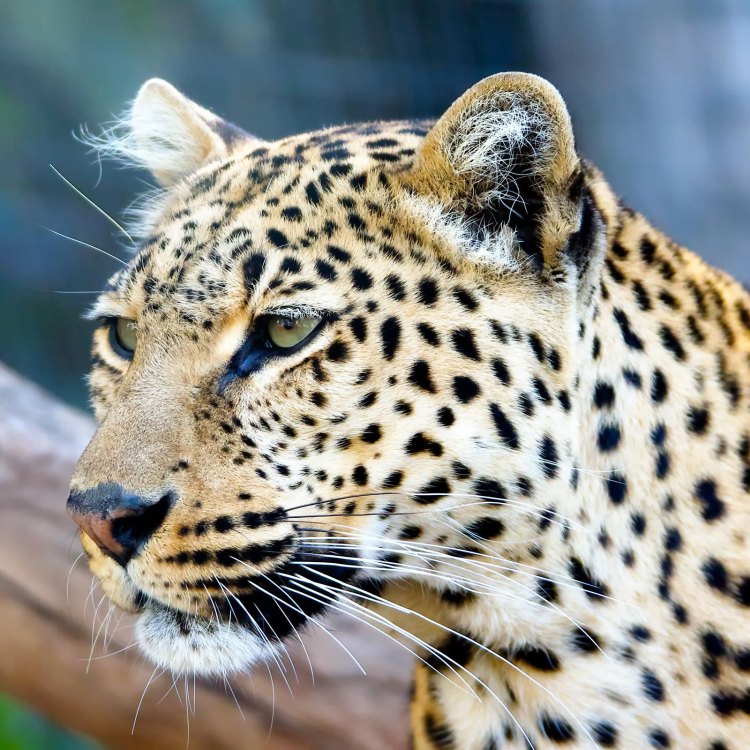
Leopard
- Adult Size: Medium to large
- Average Lifespan: 12 to 17 years
- Reproduction: Sexual
- Reproductive Behavior: Polygamous
- Sound or Call: Roars, growls, and purrs
- Migration Pattern: Sedentary but may travel long distances
- Social Groups: Solitary
- Behavior: Nocturnal and territorial
- Threats: Habitat loss, poaching, and illegal wildlife trade
- Conservation Status: Vulnerable
- Impact on Ecosystem: Regulates prey populations
- Human Use: Hunted for their fur, bones, and body parts
- Distinctive Features: Rosette patterns on fur, spotted coat
- Interesting Facts: Leopards are excellent climbers and swimmers, and they are known for their exceptional strength and agility.
- Predator: Human, large predators such as lions and hyenas
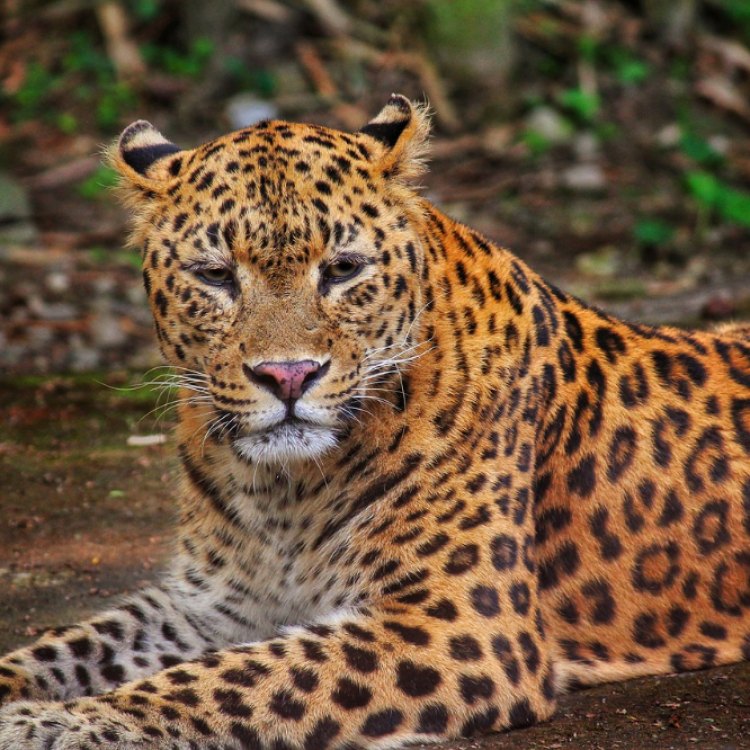
Panthera pardus
Leopard: The Magnificent and Furtive Predator
Imagine being in the heart of an African savanna, the serenity of the scorching sun rays caressing your face as you savor the stunning scenery around you. The tall, lush grass swaying in the gentle breeze, the rustle of leaves, and the sound of birds chirping in the distance. Suddenly, you hear a loud roar that pierces through the silence, echoing in the vast expanse of land. You look around, and your eyes meet with the piercing gaze of a feline predator - the leopard PeaceOfAnimals.Com.Leopards are elusive creatures that are shrouded in mystery and intrigue. Their imposing presence and stunning appearance make them a popular subject of cultural depictions, from tribal folklore to modern-day movies. But there's more to this magnificent creature than meets the eye. In this article, we will delve into the unique features of leopards and explore their impact on the ecosystem and human use.
Adult Size and Average Lifespan
Leopards are medium to large-sized cats, with males being slightly larger than females. An adult leopard can weigh between 80 to 200 pounds, with females usually weighing less than males. They have muscular bodies, allowing them to be fast and agile hunters. Their powerful hind legs can propel them forward at a speed of up to 35 miles per hour.
In the wild, leopards have an average lifespan of 12 to 17 years Lake Trout. However, leopards in captivity can live up to 23 years. The main factors contributing to their mortality in the wild are hunting, disease, and conflicts with humans.
Reproduction and Reproductive Behavior
Like most felines, leopards are sexually reproductive animals. They mate throughout the year, and their breeding season is not limited to a particular time. However, in some regions, the breeding peak occurs during the months when prey is abundant.
Leopards are polygamous animals, meaning they have more than one mate. During the breeding season, male leopards will often mate with multiple females, resulting in a litter of two to four cubs. After a gestation period of approximately 90 to 105 days, the female will give birth to her cubs in a secluded den.
Sound or Call
Leopards are known for their incredible vocal range, which includes roars, growls, and purring. They use these sounds to communicate with other leopards and to establish their territory. Roaring is often used to intimidate rivals, while growling and purring are forms of communication among family members.
Migration Pattern and Social Groups
Leopards are sedentary animals, meaning they do not migrate. However, they are capable of traveling long distances within their home range, which can span up to 46 square miles. Leopards are solitary animals, and unlike other species of cats, they do not form prides or groups. Male leopards have a larger home range compared to females, and they will often overlap with the territories of several females.
Behavior and Threats
Leopards are primarily nocturnal animals, meaning they are most active at night. They are excellent hunters and are known for their remarkable strength and agility. They are also stealthy and can move through their environment without making a sound.
As solitary animals, leopards are territorial, and they mark their territory using scent glands and claw marks on trees. They are also excellent climbers and can often be seen lounging on tree branches during the day.
Unfortunately, leopards are facing numerous threats, with habitat loss, poaching, and illegal wildlife trade being the biggest concerns. Habitat loss due to human activities such as deforestation and urbanization has greatly reduced their natural habitat, forcing them to live in smaller and fragmented areas. Poaching for their fur and body parts, which are used in traditional medicine, is also a major threat to their population. Additionally, the illegal wildlife trade has fueled the demand for live leopards as exotic pets or attractions in zoos.
Conservation Status and Impact on Ecosystem
The continuous decline in the leopard population has led to their classification as "Vulnerable" on the IUCN Red List, with some subspecies even listed as "Endangered." As apex predators, leopards play a crucial role in regulating the populations of their prey. They also help maintain a balance in the ecosystem by preventing overgrazing and ensuring the survival of plant species.
Furthermore, leopards are also essential indicators of a healthy ecosystem. Any decline in their population can signal underlying issues that need to be addressed, such as habitat loss and poaching.
Human Use and Distinctive Features
The beauty of leopards has made them a target for human use, especially in the fashion industry. Their distinctive rosette patterns on their fur make them highly sought-after for their luxurious coats. Additionally, their bones, claws, and other body parts are used in traditional medicine and for decorative purposes.
Leopards also hold significant cultural value for many indigenous communities, where they are often depicted in legends and folklore. However, the increase in trophy hunting and poaching has severely impacted their population, making them less prevalent in their traditional cultural representations.
Interesting Facts
Leopards are fascinating creatures with many unique features and behaviors. Here are some interesting facts about them:
- Leopards can climb trees while carrying prey that is heavier than their own body weight. This makes them one of the strongest climbers among big cats.
- They are also excellent swimmers and are capable of crossing wide rivers and lakes.
- Leopards have a unique adaptation that allows them to have excellent vision during the day and night. Their eyes have a reflective layer called the tapetum lucidum, which amplifies the light and improves their night vision.
- Leopards have retractable claws, which help them grip onto their prey while hunting. This also prevents their claws from getting worn out while walking.
- Leopards are the only "big cat" that can purr while both inhaling and exhaling.
- They have a unique way of caring for their young, which involves moving their cubs to a new den every few days. This helps to protect them from predators.
Predators of Leopards
Despite their strength and agility, leopards do have predators. Sadly, the biggest threat to their survival is human beings. However, larger predators such as lions and hyenas also pose a threat to young and weak leopards. Male leopards can also kill cubs to eliminate potential competition in their territory.
In essence, leopards are the embodiment of beauty, strength, and grace. From their striking appearance to their remarkable abilities, these feline creatures never cease to captivate our hearts and minds. As we continue to discover more about them, it's essential to recognize the vital role they play in our ecosystem and the urgent need to protect them. After all, it's our responsibility to ensure that future generations also have the chance to marvel at the magnificent and furtive predator - the leopard.
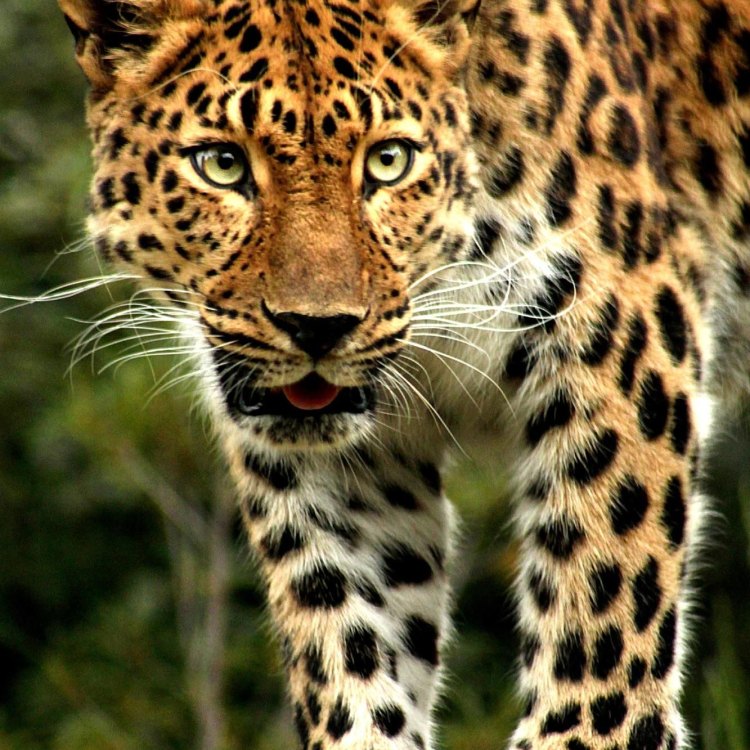
The Majestic Leopard: The Golden Predator of Africa and Asia
Disclaimer: The content provided is for informational purposes only. We cannot guarantee the accuracy of the information on this page 100%. All information provided here may change without prior notice.


